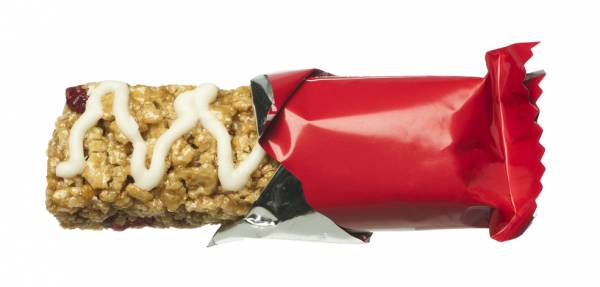You’re in the gym or at the track. Someone goes down. It looks serious. It’s up to you to care for the situation. Do you know what you’d do? A person’s life may be on the line and it could be your training partner or friend. As either a trainer or trainee, you need to be prepared to deal with any unexpected life-threatening situation that can occur during a training session or athletic competition.
You’re in the gym or at the track. Someone goes down. It looks serious. It’s up to you to care for the situation. Do you know what you’d do? A person’s life may be on the line and it could be your training partner or friend. As either a trainer or trainee, you need to be prepared to deal with any unexpected life-threatening situation that can occur during a training session or athletic competition.
Here are four life-threatening scenarios that can occur. These situations can create panic, stress, and the inability to think logically, which may exacerbate the moment. You need to have control of your emotions and possess the ability to think rationally to make the best of the situation and act expediently to save a life.
Scenario 1 – Cardiac Arrest
You’re in the gym training. You notice another trainee collapse to the floor after he or she dismounts a machine. The trainee is now lying on his or her back. What do you do?
- Determine if the person is conscious or unconscious by tapping on the shoulder and asking, “Are you okay?”
- If the person is unconscious, get someone to immediately call emergency medical services and secure an AED device (automated external defibrillator) if one is available.
- Check for breathing and a pulse: Tilt the head back with your palm on the person’s forehead. Place your first two fingers against the carotid artery on the side of the neck, just below the upper jaw. Place your ear next to the person’s mouth and listen for breathing while checking for a pulse for ten seconds.
- If the person is not breathing and no pulse is detected, begin CPR.
- Re-tilt the head, pinch the nostrils shut, and give two rescue breaths into the victim’s sealed mouth. If a breathing mask is available, completely seal the nose and mouth and give the two breaths.
- Place the heel of one hand on the sternum between the nipples.
- Place the heel of the other hand on top of your first hand.
- Position your body directly over your hands with your arms locked out vertically.
- Give 30 chest compressions fast and hard. The chest should depress no more than two inches. Count aloud: “1 and 2 and 3 and 4 and 5” all the way to 30.
- Continue the cycle of 30 compressions and two breaths for four more cycles. Recheck for breathing and a pulse after the fifth cycle. If an AED is available, use it after the first cycle to determine if defibrillation is needed.
- Follow the directions on the audio component of the AED. The instructions are simple to understand. Make sure you and others are not touching the victim when the shock is applied. If the AED indicates “shock advised,” yell “clear” and push the shock button (or stand clear if the AED device doesn’t require shock activation).
- Immediately resume CPR starting with the 30 chest compressions and two rescue breaths for five cycles.
- Reassess the victim and allow the AED to re-analyze.
- Check for a pulse at the carotid artery if the AED states no shock is advised.
- Continue CPR if a pulse is not detected, reassessing after five cycles until EMS arrives.
- If the victim regains a pulse at any time during resuscitation, maintain an open airway and give rescue breaths at a rate of one every five seconds
When emergency personnel arrive, provide them with all relevant information regarding the situation.
Scenario 2 – Heat Exhaustion or Heat Stroke
You and three of your pals are running intervals on an outdoor track. The ambient temperature is 96 degrees Fahrenheit (F). You’re trying to stay hydrated with periodic water consumption. One of your training partners decides to be tough and eschew water intake until all intervals are completed. Upon completion of the workout, the anti-water person becomes weak and dizzy. It’s most likely one of two issues – heat exhaustion or heat stroke.

Heat exhaustion can occur when you perform too much work in hot temperatures. It’s not life threatening, but needs to addressed. Heat stroke can occur in the same environment, but it’s more dangerous and can be life threatening. How can you differentiate between the two?
Symptoms of heat exhaustion may include:
- A body temperature at approximately about 100 degrees F
- A fast pulse and low blood pressure
- Cramping and sore muscles
- Nausea, vomiting, and dizziness
- Moist skin and noticeable sweating
- Headache
To treat heat exhaustion. Do this:
- Move the person to a cool, shady area and allow them to rest.
- Hydrate them with fluids containing salt and sugar (sports drinks).
- If they cannot drink, it may be time to head the urgent care center for intravenous hydration.
Symptoms of heat stroke may include:
- A body temperature 105° F
- Rapid breathing, a rapid irregular pulse, and high blood pressure
- Weakness, dizziness, and blurred vision
- Confusion, delirium, and unconsciousness
- Seizures
- Pale, dry skin and no sweating
Treatment for heat stroke. Do this:
- Get someone to call 9-1-1.
- Move the person to a cool, shady area.
- Remove clothing to allow the body to cool
- Actively cool the victim. The best way is called “evaporative cooling.” It involves sponging the victim with cool water or spraying him or her with a cool mist. If fans are available, blow them directly on the victim.
- Give the victim medications if he or she uses them. They may be necessary if the victim is experiencing seizures or uncontrollable shivering.
Scenario 3 – Conscious Choking
You just completed a training session. During the post-training segment your training partner consumes a post-workout energy bar. He or she then begins choking and coughing. As a result, your training partner is visibly struggling to breath. The energy bar is obstructing the airway and something must be done to remove it. Again, what should you do?

Encourage the victim to continue coughing. If they are unable to cough, speak, or breathe, do the following:
- Get someone to call 9-1-1.
- Wrap your arm around the victim’s midsection, lean the victim forward, and give five back blows to the upper back with the heel of your hand.
- Give five quick abdominal thrusts by placing the thumbside of your fist against the middle of the victim’s abdomen, just above the navel. Grab your fist with the other hand and initiate the thrusts. Be forceful in your attempt to dislodge the obstruction.
- Repeat the five back blows and five abdominal thrusts until the object is expelled and the victim can breathe or cough on his or her own.
Scenario 4 – Stroke
You’re coaching at a sporting event. You notice a fellow coach acting confused, speaking strangely, and exhibiting awkward facial expressions. Is this an issue? If so, what should you do?
It’s likely your fellow coach is experiencing a stroke. A stroke (or brain attack) is a sudden interruption in the blood supply of the brain. Most strokes are caused by an abrupt blockage of arteries leading to the brain.
Stroke symptoms include:
- Numbness or weakness on one side of the face, an arm, or a leg
- Trouble speaking and confusion
- Dizziness and difficulty seeing
- Loss of balance and coordination
- Severe headache
To determine if it’s a stroke, use the acronym FAST:
- Face. Ask the victim to smile and notice if one side of the face droops.
- Arm. Ask the victim to raise both arms and notice if one arm is unable to rise.
- Speech. Ask the victim to say a simple sentence such as “The weight is light” and notice if they’re slurring their words.
- Time. If you determine it’s a stroke, get someone to call 9-1-1 immediately. When EMS arrives, inform them of the time when signs of the stroke first occurred.
To address a stroke victim until emergency personnel arrive, do this:
- Comfort and reassure them.
- Lay them down and slightly elevate their head and shoulders.
- If unresponsive, place them on their left side.
- Do not give them anything to eat or drink.
- Do not allow them to move once you get them in a comfortable position.
In conclusion, you never know when you’ll be in a situation that involves a life-threatening emergency. The more you know and the quicker your actions, the greater your chance of saving a life.
References:
1. Stay Well Health & Safety Solutions. American Red Cross: Emergency Medical Response. Yardley, PA: Stay Well Health & Safety Solutions, 2011.
2. “First Aid for Cardiac Arrest,” posted April 13, 2012.
3. “First Aid for Heat Exhaustion and Heat Stroke,” www.healthy.net.
4. “Choking: First Aid,” www.mayoclinic.com.
5. “Stroke Heroes Act Fast,” www.strokeinfo.org.
Photos courtesy of Shutterstock.






